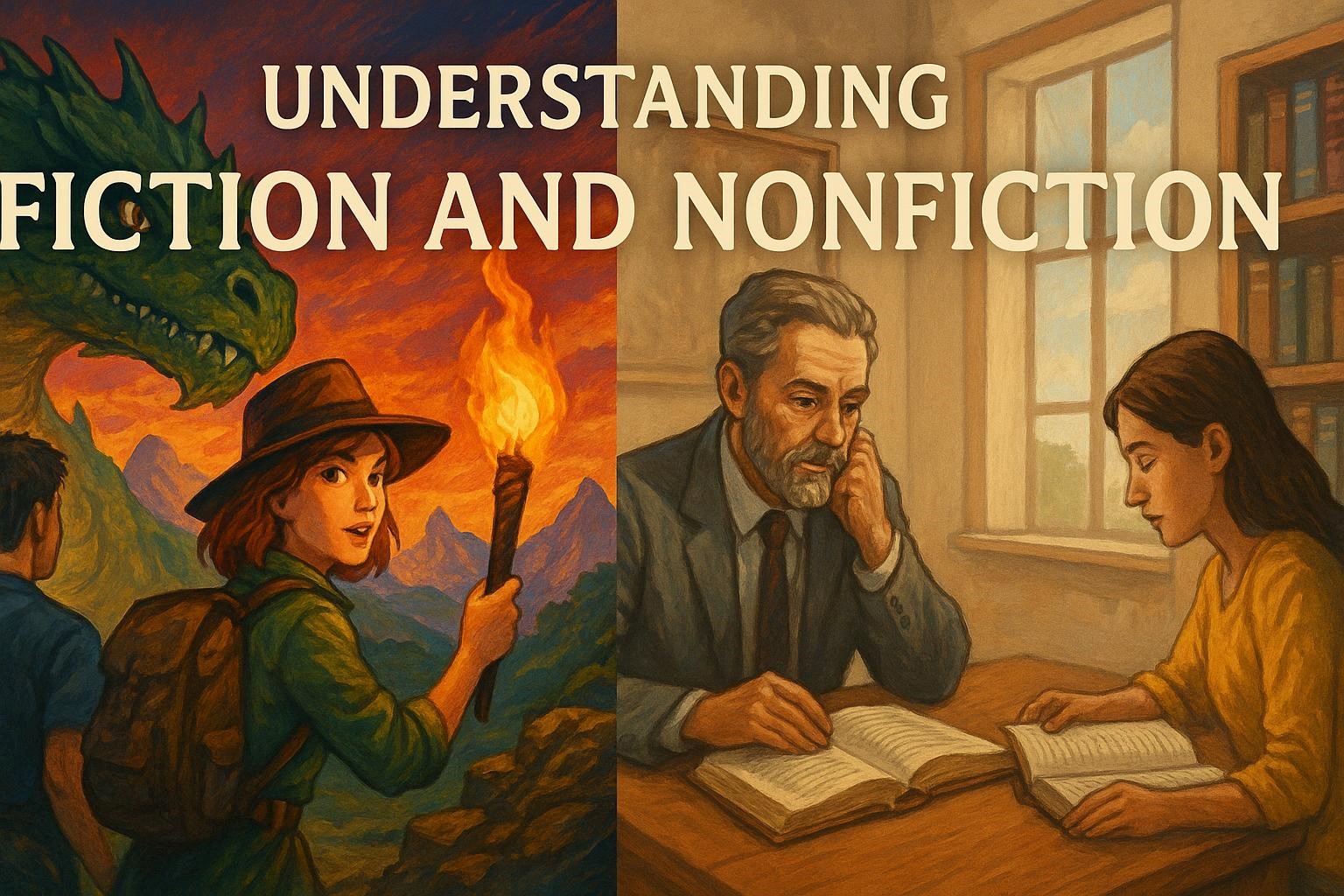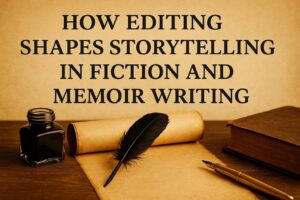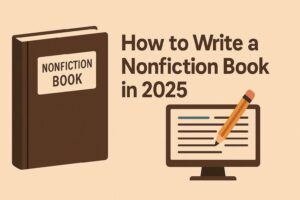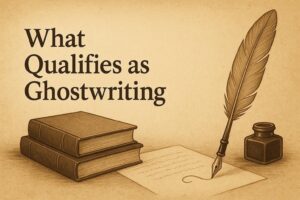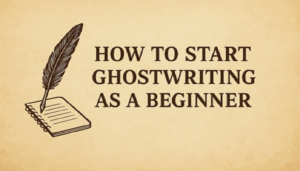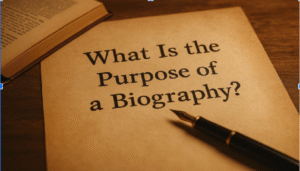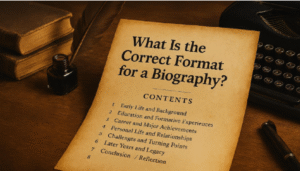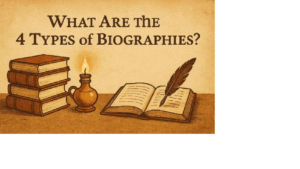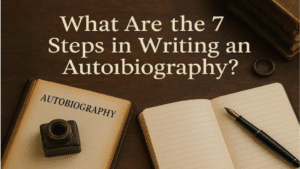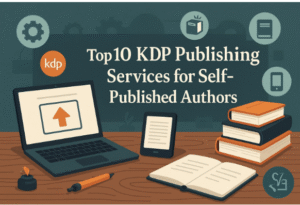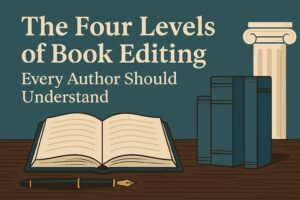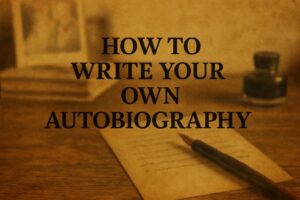Fiction is fantasy. Nonfiction is fact. Simple, right? Not quite. This guide unpacks the real differences between fiction and nonfiction: from purpose and prose to hybrid genres and why the distinction matters more than ever for readers and writers alike.
Introduction
Your heart races. The story you’re reading is gripping, raw, impossible to put down. But then doubt creeps in. Did this really happen? You flip to the back. It’s labelled nonfiction. You blink. That can’t be right.
This is the strange magic and confusion at the heart of fiction vs nonfiction. In a world overflowing with blurred genres, embellished memoirs, and “based on a true story” disclaimers, knowing what’s real and what’s crafted isn’t as easy as it used to be.
I’ve fallen for both: sweeping fantasy epics and gut-punching biographies. But somewhere along the way, I realized most people don’t actually understand where the line is, or why it matters.
This guide isn’t here to ruin the illusion. It’s here to sharpen your eyes. To show you what sets these two storytelling worlds apart, where they overlap, and how that knowledge changes the way you read, and maybe even the way you write.
Defining Fiction
Born from Imagination
Fiction begins where reality ends. It’s the art of crafting stories that didn’t happen but feel like they could have. At its core, fiction is driven by imagination. It’s not restricted by facts or evidence. Instead, it plays with “what if” and runs wild from there. If you’ve ever been pulled into a world that doesn’t exist but still made you cry, laugh, or hold your breath, you’ve experienced the power of fiction.
So, what is fiction writing? It’s a form of storytelling built on made-up events, characters, and worlds. It can be deeply emotional, wildly fantastical, or completely grounded in reality, so long as the events didn’t literally happen.
Subgenres That Shape the Story
Fiction isn’t one-size-fits-all. Within it, you’ll find subgenres that shape how the story is told. Mystery, fantasy, romance, and science fiction each come with their own conventions. Fantasy might involve dragons. Sci-fi might take place on a spaceship. Romance will usually promise an emotional arc and a satisfying ending. Any top notch fiction writing services will tell you that each genre sets its own rules, but they all invite readers to escape.
The Power of Language
In fiction, the writing itself often becomes part of the magic. Authors use metaphor, imagery, and symbolism to evoke emotion and meaning. Prose isn’t just a vehicle for facts, it’s an art form. You might find sentences that linger in your mind long after the story ends, not because they told you something real, but because they made you feel something true. Fiction allows for emotional truth even when the events are imaginary. And that’s what gives it such lasting power. It mirrors life, without copying it.
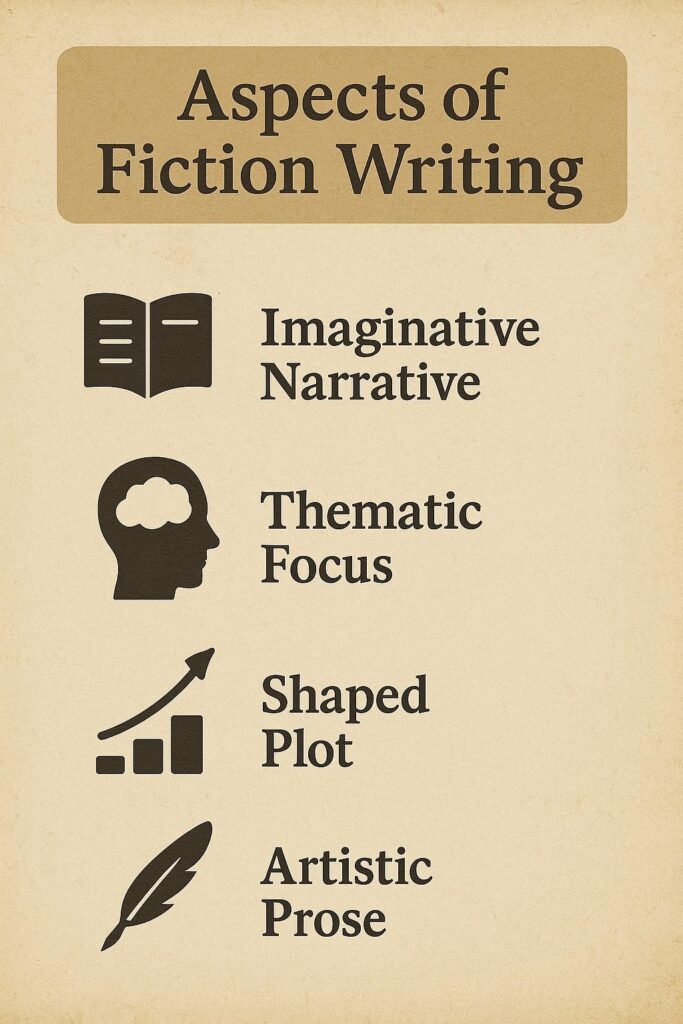
Defining Nonfiction
Rooted in Reality
Nonfiction is built on facts. It deals with real people, real events, and real-world information. Whether it’s a detailed biography, a breaking news article, or a personal memoir, nonfiction is anchored in truth. Unlike fiction, it doesn’t create worlds from scratch. Instead, it documents the world as it is or was.
So, what is nonfiction writing? It’s the act of telling true stories or presenting factual information in a structured, readable form. Nonfiction writers aim to inform, explain, explore, or reflect, all while staying honest with the reader.
Forms and Functions
Nonfiction shows up in many shapes. Biographies and memoirs focus on individual lives. Journalism delivers current events and investigations. Academic writing presents research, arguments, and critical thought. Then you have essays, travel writing, and self-help books, each with their own goals and methods.
Despite these differences, they all share one core feature: a commitment to truth. Every claim should be supported by evidence, sources, or personal experience that can be verified. When a writer presents an idea as fact, it must be defensible.
Clear, Credible, and Purposeful
Nonfiction doesn’t try to entertain with fantasy. Its aim is to inform, educate, or document. That doesn’t mean it has to be dry. Great nonfiction can be just as compelling as fiction, especially when it’s written with clarity and voice. The best nonfiction writers make complex ideas feel simple, turning raw data into meaningful insight.
Credibility is key. Readers come to nonfiction to learn something they can trust. That trust is earned through accuracy, research, and transparency.
In a world full of opinions and noise, nonfiction offers readers a grounded space. It’s where facts matter, and truth takes the lead. From self help book writing services to biography writers, the nonfiction book writing world is as rich and versatile as the fiction one.
Core Differences: A Side-by-Side Comparison
Fiction and nonfiction may sit on the same bookshelf, but they serve very different purposes. One is born from imagination, the other from reality. Understanding their core differences isn’t just helpful for readers and writers, it’s essential. It helps set expectations, guides emotional investment, and shapes the way information is absorbed.
Here’s a breakdown of the most important contrasts between fiction and nonfiction.
Imagination vs. Fact
This is the fundamental divide. Fiction builds a world that never existed, while nonfiction documents the world as it is or was. A novel might follow a detective chasing a supernatural killer in a futuristic city. A nonfiction book, on the other hand, might follow the real-life account of a criminal investigation, with facts checked and sources cited.
In fiction, you can bend the rules of time, space, even physics. In nonfiction, truth is the rule. A writer can’t invent quotes or rewrite history without stepping into dishonesty.
Purpose: Entertainment vs. Education
Fiction aims to entertain, inspire, and provoke emotion. It’s crafted to make you feel something; to escape, to dream, to live inside someone else’s skin for a while. Even when fiction tackles serious themes, it does so through storytelling that is meant to engage the imagination.
Nonfiction, by contrast, aims to inform, educate, or explain. The emotional pull may still be strong, especially in memoirs or narrative journalism, but the reader enters the text expecting something true. The purpose is to learn, to understand, to discover.
That’s the heart of the fiction vs nonfiction divide. One asks, “What if?” The other asks, “What happened?”
Language and Prose Style
Fiction often uses artistic language. It’s not uncommon to find lyrical sentences, rich metaphors, or symbolic imagery. Writers in fiction can afford to be experimental with structure and voice. The beauty of the language is sometimes as important as the plot itself.
In nonfiction, clarity is king. The writing must be direct and understandable, especially when explaining complex ideas or events. That doesn’t mean nonfiction can’t be beautifully written, but it prioritizes meaning over mood. Every word serves the goal of accuracy.
Structure and Support
Fiction follows its own logic. It might be told in a nonlinear way, jump between perspectives, or unfold across imagined worlds. The structure is built around plot, character development, and emotional arcs.
Nonfiction usually relies on structure that supports credibility. This means using references, citations, timelines, and real-world context. Memoirs may have more flexibility, but journalistic or academic nonfiction often follows a strict format to ensure that readers can trace and trust the information.
The presence or absence of evidence is a strong signal. In nonfiction, claims need proof. In fiction, they need only to feel true within the world of the story.
Flexibility of Content
Fiction allows for unlimited freedom. Writers can invent languages, create new worlds, or reimagine the past. The only limit is the reader’s suspension of disbelief.
Nonfiction is bound by what is true and verifiable. Writers must be careful about facts, avoid bias, and acknowledge sources. Even personal essays, which allow for subjectivity, must be honest about the writer’s perspective.
That lack of flexibility is what builds trust in nonfiction. Readers believe what they’re being told because it is presented as fact, not fantasy.
Reader Experience
Fiction pulls readers into an emotional journey. You connect with characters, follow plot twists, and lose yourself in imagined realities. You might cry over a fictional death or feel triumph when a made-up hero wins. Nonfiction offers a different kind of satisfaction. It feeds curiosity, builds knowledge, and helps you understand the world. The emotional response might be empathy, outrage, or inspiration, but it’s grounded in the knowledge that these things actually happened.
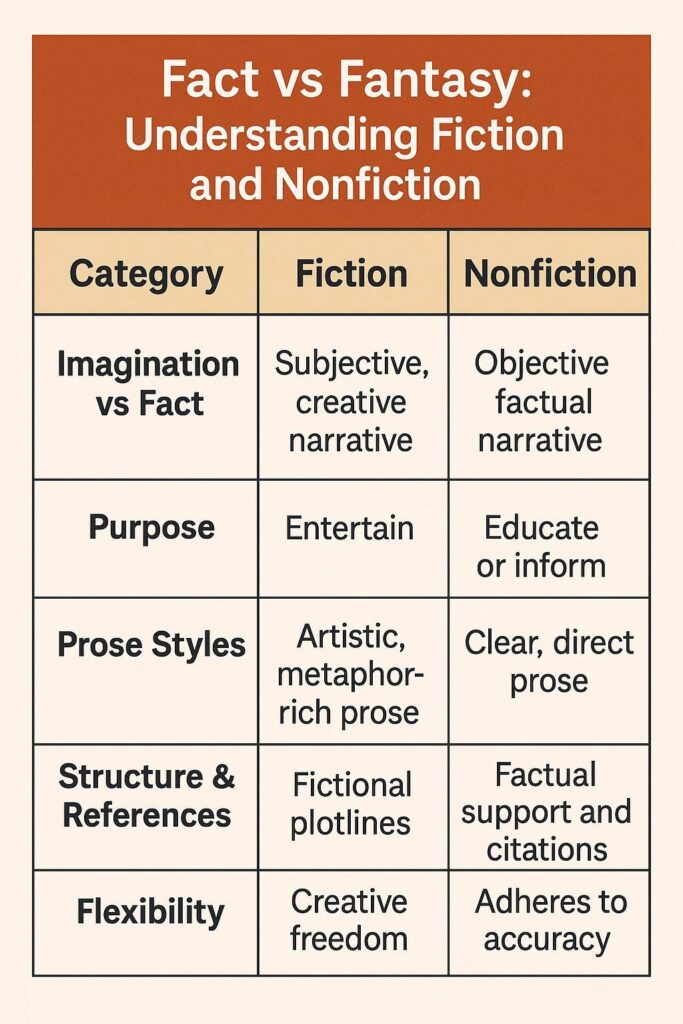
Fiction and nonfiction offer different gifts. One lets you escape reality, the other helps you make sense of it. Both are valuable. Both are powerful. But knowing which one you’re reading changes everything.
Where Fact and Fantasy Meet: Hybrid Genres
Blurring the Boundaries
Not all stories fit neatly into the fiction or nonfiction box. In fact, some of the most powerful narratives live in the grey space between. These are the hybrid genres, where real events are told using fictional techniques, and the result is something deeply human, emotionally resonant, and often controversial.
What Is Narrative or Creative Nonfiction?
One of the most well-known forms of this hybrid approach is narrative nonfiction, also called creative nonfiction. It’s nonfiction in content, but it reads like a novel. Writers use dialogue, scene setting, character development, and pacing to bring real stories to life. The goal is to make fact feel as immersive as fiction, without sacrificing truth.
Books like In Cold Blood by Truman Capote and Educated by Tara Westover have become iconic examples. In Cold Blood tells the story of a murder in Kansas using techniques commonly seen in thrillers. Educated reads like a coming-of-age novel, but it is a memoir rooted in the author’s real-life experiences.
Why Writers Blend Styles
This blending of storytelling styles can be incredibly effective. It allows readers to emotionally engage with facts in a way that traditional reporting or academic writing sometimes can’t. Real events gain a pulse, a heartbeat, a sense of immediacy. Complex social issues become personal and relatable through the lens of a single story.
However, this approach isn’t without its risks. When writers blur the line between truth and invention, they also blur the reader’s trust. Misleading details, composite characters, or speculative thoughts presented as fact can lead to questions about credibility. That’s why transparency is so important in hybrid genres. Many authors include notes or disclaimers to clarify where creative liberties have been taken.
What Is Fiction Writing vs Factual Writing?
Understanding what is fiction writing helps draw the line. Fiction can invent, rearrange, and embellish freely. Nonfiction cannot. Hybrid genres walk the tightrope between the two, using fictional tools to deliver factual narratives. The skill lies in using these tools without stepping into deception.
Writers working in this space must constantly ask themselves, “Is this true? Or is this just emotionally true?” That distinction matters. A writer might capture the feeling of a moment perfectly, but if the details are fabricated, the work loses its nonfiction integrity.
The Reader’s Role and Why It Matters
Readers, too, carry responsibility. It’s important to approach hybrid works with curiosity and critical thinking. A compelling story can still distort reality if you’re not paying attention. Check the author’s notes. Look into the sources. Ask questions. The beauty of these genres lies in their emotional depth, but the strength comes from their commitment to real events.
This is one of the many reasons why understanding the difference between fiction vs nonfiction matters. It helps you approach stories with clarity. It teaches you to appreciate creativity without confusing it with fact. And it ensures that the powerful blend of fact and feeling doesn’t come at the cost of truth.
The Role of Truth in Fiction
Fiction Isn’t Always Fake
Fiction might be imagined, but that doesn’t mean it’s completely detached from reality. In fact, some of the most memorable and impactful fiction is rooted in real-world truths. Authors often pull from history, personal experience, or current events to build believable settings, conflicts, and characters. Fiction is a mirror; it reflects the world back to us through story.
Historical fiction, for example, takes real events or time periods and wraps them in imagined lives. The facts provide the framework. The fiction fills in the emotional gaps. Think of novels like All the Light We Cannot See or The Book Thief. The places, wars, and timelines are factual. The characters? Imagined. But the emotional truths they uncover feel incredibly real.
The Power of Verisimilitude
Fiction relies heavily on something called verisimilitude: the appearance of being true or real. Even the most fantastical story, like a sci-fi novel set on a distant planet, has to feel internally consistent. The world must follow its own rules. The emotions must ring true. Readers don’t have to believe the events actually happened, but they do need to believe they could happen within the logic of that story.
That’s where truth comes in. If you plan on hiring a fantasy writer, they’ll tell you this basic rule: fiction borrows realism to anchor the imagination. A made-up story set in London feels more vivid if the details match the actual city. A character’s grief feels more powerful if it mirrors how people really experience loss. These touches of authenticity make the fiction believable, and deeply relatable.
Suspension of Disbelief
When readers open a novel, they make an unspoken agreement with the author. It’s called the willing suspension of disbelief. They agree to believe in the story, even though they know it’s not true. But that belief only lasts if the story holds up. If the characters act out of line with human nature, or the plot ignores logic, the illusion breaks.
Truth in fiction isn’t about accuracy. It’s about resonance. It’s about using what’s real to deepen what’s imagined. That’s what gives fiction its emotional weight. It might not be factual, but it still feels honest.
Why the Distinction Matters
It’s easy to think the difference between fiction and nonfiction is just a label. One sits in the “novel” section, the other in “biography” or “current affairs.” But the truth is, that distinction carries weight. It matters for readers, for writers, and for the broader conversations we’re all part of.
For Readers: Trust and Expectations
As a reader, knowing what you’re stepping into shapes the experience. When you pick up a novel, you’re opening yourself to emotion, imagination, and invention. You expect crafted characters, controlled pacing, and dramatic arcs. You enter knowing it is not real, and that is part of the magic.
Nonfiction creates a different bond. You read it to learn, to understand, to confront real lives and real events. If you find out a nonfiction writer has invented dialogue or tweaked facts for drama, it feels like a betrayal. That is why clarity matters. The line between fact and fiction is not just academic, it is emotional.
For Writers: Ethics and Craft
Writers also need to draw the line clearly. If you are writing nonfiction, your responsibility is to truth. Your voice, your interpretation, even your memory may shape the story, but the events must remain grounded in reality. Misrepresenting that crosses a line that damages your credibility.
If you are writing fiction, the rules are different. You can let your imagination lead, but there is still an obligation to your reader. You are expected to build a world that makes sense and characters that feel real. Even invented stories hold a kind of truth that readers will instinctively search for.
In a Noisy World: Why It Matters Culturally
In an age of misinformation and viral half-truths, understanding the difference between fiction vs nonfiction is more important than ever. Mislabelled content can shape public opinion, fuel outrage, and muddy important conversations. Knowing how to read critically, ask questions, and assess intent is no longer just for academics. It is a necessary skill for everyone.
When fiction and nonfiction are clearly defined, we gain more than just labels. We gain trust. We gain understanding. And we keep the power of story, both real and imagined, exactly where it belongs.
Frequently Asked Questions
1. What is the difference between fiction and nonfiction?
Fiction is based on imagination. It includes made-up characters, events, and settings. Nonfiction is based on facts and real events. The key difference lies in the intention: fiction is meant to entertain or provoke thought, while nonfiction aims to inform, document, or explain.
2. Can a book be both fiction and nonfiction?
Yes. This is common in creative or narrative nonfiction. These works tell true stories but use storytelling techniques found in fiction. The events are real, but the delivery feels novel-like.
3. Why do authors blend fiction and nonfiction?
Blending helps make complex or emotional stories more engaging. Real facts are easier to connect with when they are presented through strong narrative, vivid scenes, and character-driven arcs. However, this approach must be used responsibly to maintain credibility.
4. What is nonfiction writing?
It is writing based on real people, facts, events, and information. It includes genres like memoirs, biographies, journalism, essays, and academic work. The purpose is to inform, reflect, or present reality with accuracy and honesty.
5. Can fiction convey truth?
Absolutely. Fiction can express emotional, psychological, and social truths through imagined scenarios. While it does not rely on facts, it often reflects real human experiences and feelings in a powerful way.
6. How can I tell if a memoir has fictional elements?
Check for an author’s note or disclaimer. Writers sometimes clarify whether characters are composites or if some events were reconstructed from memory. Look for transparency around how the story was shaped.
7. Is one genre better than the other?
Not at all. Fiction and nonfiction offer different strengths. Fiction stretches the imagination and builds empathy. Nonfiction expands knowledge and helps us understand the real world. Both are valuable in their own way.
Conclusion
Fiction and nonfiction serve different purposes, but both are vital to how we understand the world and ourselves. One invites you to escape, the other invites you to explore reality. The beauty of storytelling lies in its range, from pure invention to hard truth. Understanding the difference between fiction vs nonfiction helps you read more clearly, write more honestly, and engage with stories more deeply. You do not have to choose one over the other. You just have to know which world you are stepping into, and why it matters when you do.

